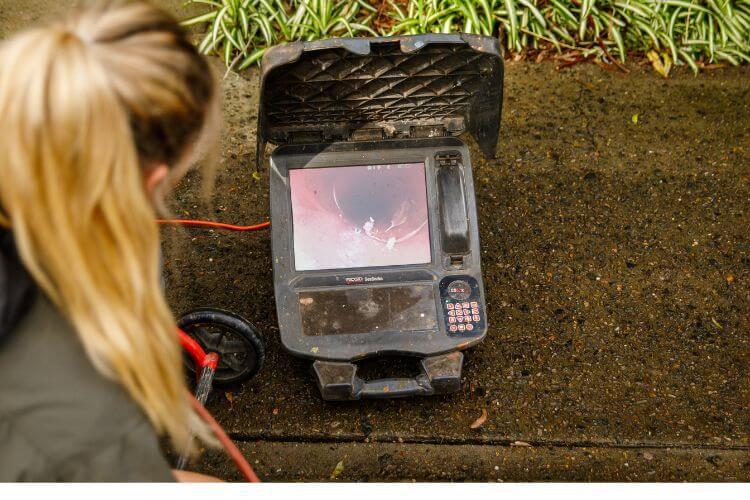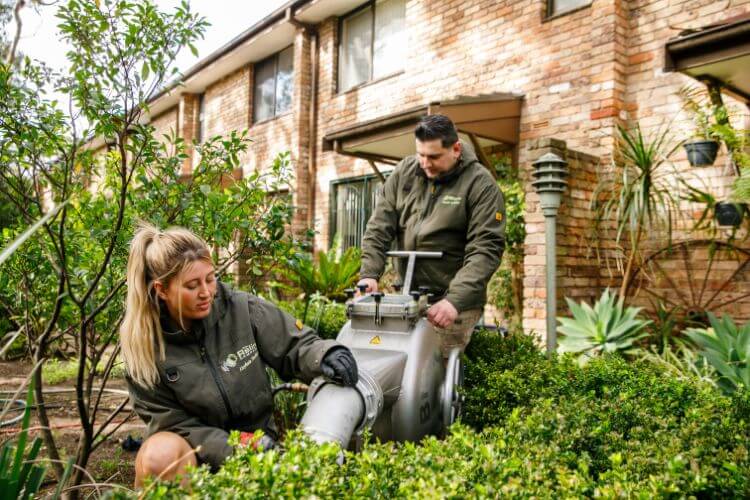One of the biggest problems that underground plumbing can face is the presence of tree roots. As trees grow and their roots spread and dig deeper, they can, from time to time, encounter underground pipes. Pipes are a source of moisture and nutrients, so once found, trees will grow towards them.
Sometimes they grow around said pipes without an issue, but other times they push right through and end up bending, cracking or even splitting pipes.
While this can understandably be quite a nuisance, it can also swiftly become a health hazard, especially if it cracks one of your sewer lines.
Fortunately, there are a few effective ways to not only fix, but also prevent this issue from arising in the first place.
Identifying Tree Root Blockages in Your Drain
You might be asking, well the pipes are underground and so are the tree roots, so how can you tell if there’s a problem?
Well, common signs of a blockage include:
- Gurgling pipes
- Drain(s) not clearing properly
- Toilet(s) not draining properly
- A backup of bad smells emanating from drains
- Sudden, localised wet patches of grass

If you notice any of these, chances are you have a blockage somewhere in your pipeline. Finding the culprit, however, requires an underground inspection with a CCTV camera probe. Once the issue of tree roots is identified, it’s time to find the most effective solution to unclog your drains and get the water flow right again.
Of course, the best fix is always prevention. So, which trees should we avoid growing in our yards and gardens? Check out our handy guide on the top 18 worst offenders for tree root blockages for more on that.
Different Methods to Remove Tree Roots from Drains
So, we know it’s a tree root causing the problem, but what’s the best way to fix it and restore the pipe to its former glory? Well, that depends on how big the root is and the extent of the damage caused.
Mechanical removal with a root cutter is the best bet for large roots or to remove root sections that have a risk of growing back and causing the same problem at a later date. This likely means at least some excavation and cutting so that the pipe is kept safe, but the tree is not damaged more than strictly necessary.
For more minor intrusions, a drain snake can be used to hook out smaller roots, especially those that can be broken up easily. Of course, the roots have to be close enough to a surface drain to be able to reach them as well.
Chemical treatments are one option, with certain herbicides specifically designed for root intrusion, but there are environmental consequences to consider. Depending on the damage done, the chemicals may spread through the ground, affecting grass or other plants around the target area.

Another option is hydro jetting. A round nozzle, with multiple jets, is threaded through your pipe to the site of the blockage and very high-pressure water is used to cut through the root system. The root debris is then flushed away as more water flows down the pipe.
It can be difficult to know which method to use in which situation, so when in doubt, choose the number 1 way of dealing with tree roots in your sewer pipes: call in a professional plumber to talk about your plumbing system options.
DIY Step-by-Step Guide to Clearing Your Drain
For a minor obstruction close to the surface, you might be able to clear the drain yourself with a drain snake or auger. This option is best if you can identify a wet or muddy patch close to an open drain, as commercially available snakes and augers are less than 8m long.
Another DIY option is to use something that will kill and dissolve the tree roots.
Rock salt is one common fix. Pour a good measure of salt down the drain and then flush it through with water. The salt will coat the roots and dry them out, killing them and making them brittle. Eventually, they will break off and be washed away by normal water use.
There are also chemical drain cleaners on the market. Follow the manufacturer’s instructions (often pouring down a certain measure and waiting a set amount of time), and then flush the area with clean water. Be mindful, though, that these chemicals are often highly caustic and may cause further damage to the pipes and the surrounding soil and plants even as they clear the roots.
Copper sulphate is another commercially available alternative (found in most hardware stores), which, when mixed with enough water, should clear away those troublesome root systems. Again, always follow the manufacturer’s instructions.
If none of these work, or you’re facing a more challenging root invasions, it’s best to call in the professionals.
When to Call a Professional Plumber
If the roots have caused structural damage to the pipe and there are leaks present, chemicals and augers won’t fix the pipe’s structural integrity. This means a consistent water spill, which in turn means higher water bills and a permanent muddy wet spot above the leak.
Additionally, some root invasions are just too big to handle without professional equipment. To best protect your property and your local environment, call in a team of plumbers with all the solutions (like The Relining Company!)

Here’s what you can expect from our service.
First, we conduct an inspection where we identify the location of the issues through the closest opening. We do this with a CCTV camera system that we thread through the pipes to find the root cause (pun intended). Once we’ve found it, we determine the most appropriate method for removal from the lists above.
Finally, and most importantly, we assess your pipes for damage. More often than not, there will be cracks or holes that need fixing and that’s where our services really shine. As well as pipe clearing, we also offer pipe relining services.
By inserting a resin coated liner over the holes, we can seal closed damaged pipes without needing to dig them up and replace them. It’s quicker, more effective, no mess, and comes with a 35-year guarantee!
Preventing Future Blockages
The old saying that “an ounce of prevention is worth a pound of cure” is right on the money when it comes to pipes and drains. Getting regular maintenance on your plumbing is your best way of pre-empting problems before they can become a crisis. Book in for an annual drain inspection to keep on top of any hidden issues before a crack sends moisture and waste into your front yard.
Also, avoid planting trees near your plumbing lines and check our guide on the trees most likely to cause plumbing issues and plant them well away from any subterranean lines.
Clear Your Drains of Tree Roots Once and For All
There are a number of ways that tree roots can work their way into our plumbing systems, but fortunately, there are many ways to repair and restore cracked and root-filled pipes. From manual removal to chemical treatment, there’s a solution to your problem.
Take action before severe damage occurs by getting a pipe inspection to check your pipe’s health. The best fix is to prevent a repair from ever being needed.
We’ve dealt with countless cases just like yours, so give the team at The Relining Company a call today and let’s get your plumbing back to its best.
Back to Top